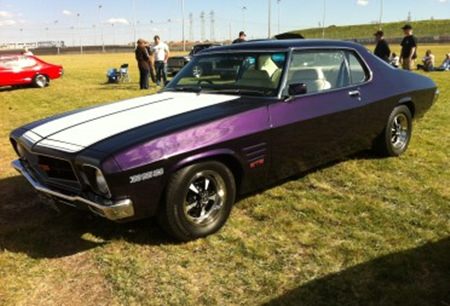With much interest being shown in older cars, it is worthwhile trying to fix the various categories.
A classic car is an older automobile; the exact definition varies around the world. The common theme is of an older car with enough historical interest to be collectable and worth preserving or restoring rather than scrapping.
In the UK two taxation issues do impact however, leading to some people using them as cutoff dates. All cars built before January 1, 1975, are exempted from paying the annual road tax vehicle excise duty. This is then entered on the license disc displayed on the windscreen as “historic vehicle” (if a car built before this date has been first registered in 1975 or later, then its build date would have to be verified by a recognized body such as British Motor Heritage Foundation to claim tax-free status). HM Revenue and Customs define a classic car for company taxation purposes as being over 15 years old and having a value in excess of £15,000.
 Aussie Holden Monaro 1971.
Aussie Holden Monaro 1971.
In the UK, ‘classic cars’ range from veteran (pre–First World War), to vintage (1919–1930), to post-vintage (1930s).
There is a certain 1950 Mercedes being called a “vintage” car, which it is not, a “post vintage thoroughbred” would be closer, I believe.
I managed to unearth pre-1985 Mk1 Ford Escorts, this being known as “Retro” in Thailand. What was very interesting was that the Ford Escorts were actually built in Thailand in the early 1970’s and not imported. This explained why there were quite a few of this model around, and as I write this I know of at least 15 that are sitting in sheds around the place. One is a red post office van bodied one as well. Just where did these cars come from?
Going back even before the Mk1’s there are other Fords which have turned up in paint shops and upholstery places in Pattaya including a couple of 105E’s and the early reverse back window Anglias. One of which is the estate version.
What other cars were also built here? Another friend turned up a Holden HQ Monaro two door of 1971 vintage. After a week, this became not one, but two, and amazingly they have consecutive VIN numbers! Both Monaro’s (the performance model) with the 253 V8 engines. Now how rare is that?
Actually I had been to the assembly plant for Holdens in Thailand in 1975 on my first trip here. Asoke Motors in Asoke Road (Soi 21 Sukhumvit) in Bangkok was the official home for GMH (General Motors Holden). The cars basically arrived CKD and were assembled here, and there are still quite a few of these early Holdens around. In fact, I am told that HQ Monaro’s are now fetching big money in Australia. Now a financial viability to ‘export’ Australian vehicles from Thailand back to Australia. Amazing!
Fiat and VW must have also sold well in Thailand, if the number of 1100 Fiats and Beetles are anything to go by. VW in particular must have sold their Kombi wagons in large numbers, and I know of three being used as mobile “cocktail cars” in Pattaya and another couple in body shops.
American iron is also turning up. Within one km from my office there is a purple notchback Mustang and a Mercury Cougar. Neither has the original engine, but for that matter, very few of the Fords or Fiats do either. OK, from the purist’s viewpoint this is a no-no, but at least the visual appeal of an older car is being maintained.
So, are the classic cars that are being unearthed part of a country-wide resurgence of interest in older vehicles or what? Having met quite a few of the owners, there is an increase in interest. The ages range from 70+ to 30 year olds, but all have a genuine interest in the older vehicles. Long may this continue. And long may my Mk1 Escort continue to confound much younger cars on the race track.




